 Animals
Animals  Animals
Animals  History
History 10 Most Influential Protests in Modern History
 Creepy
Creepy 10 More Representations of Death from Myth, Legend, and Folktale
 Technology
Technology 10 Scientific Breakthroughs of 2025 That’ll Change Everything
 Our World
Our World 10 Ways Icelandic Culture Makes Other Countries Look Boring
 Misconceptions
Misconceptions 10 Common Misconceptions About the Victorian Era
 Mysteries
Mysteries 10 Strange Unexplained Mysteries of 2025
 Miscellaneous
Miscellaneous 10 of History’s Most Bell-Ringing Finishing Moves
 History
History 10 Great Escapes That Ended Right Back in Captivity
 Weird Stuff
Weird Stuff 10 Fascinating Things You Might Not Know About Spiders
 Animals
Animals 10 Animals That Humiliated and Harmed Historical Leaders
 History
History 10 Most Influential Protests in Modern History
 Creepy
Creepy 10 More Representations of Death from Myth, Legend, and Folktale
Who's Behind Listverse?

Jamie Frater
Head Editor
Jamie founded Listverse due to an insatiable desire to share fascinating, obscure, and bizarre facts. He has been a guest speaker on numerous national radio and television stations and is a five time published author.
More About Us Technology
Technology 10 Scientific Breakthroughs of 2025 That’ll Change Everything
 Our World
Our World 10 Ways Icelandic Culture Makes Other Countries Look Boring
 Misconceptions
Misconceptions 10 Common Misconceptions About the Victorian Era
 Mysteries
Mysteries 10 Strange Unexplained Mysteries of 2025
 Miscellaneous
Miscellaneous 10 of History’s Most Bell-Ringing Finishing Moves
 History
History 10 Great Escapes That Ended Right Back in Captivity
 Weird Stuff
Weird Stuff 10 Fascinating Things You Might Not Know About Spiders
10 Awesome Stories About Incredible Underdogs
Whether it’s David vs. Goliath or the Average Joe’s vs. the Globo Gym Purple Cobras, everybody loves an underdog story. Tales of the little guy fighting the giant resonate with people across the world. It doesn’t matter if the battle is over a trophy or if it’s life-or-death struggle—we always want the underdog to emerge victorious.
10Kalpana Saroj vs. The Hindu Caste System

Dalits are the lowest of the low in the Hindu caste system. While there are laws to prevent discrimination against these so-called untouchables, they only go so far. Men are still refused haircuts, women are forbidden from using the public tap, and children are ostracized at school.
It was even worse when Kalpana Saroj was growing up. As a child, she was forbidden from drinking out of the wells of Brahmins (the highest caste), and many people wouldn’t let her inside their homes. Upper-caste kids beat her up, and teachers wouldn’t let her take part in school activities. People treated her like dirt.
Things got worse when she was married at age 12. Her husband was a decade older and lived in a Mumbai slum. He savagely beat her, as did her alcoholic in-laws. It got so bad that her father rescued her six months later, but that didn’t end the problems. Back in her village, neighbors despised her for leaving her husband, and the poor girl drank poison to escape the pressure.
Fortunately, Saroj survived and went back to Mumbai to make a new life, working as a tailor and earning less than a dollar a month. Eventually, she took out a $1,000 government loan and opened her own furniture and blouse-making business. As money started coming in, Saroj got into real estate, buying and selling property and even building a shopping mall. And when the mob put a contract on her head, ticked off that this woman was muscling into the real estate business, she learned their names and handed them over to the cops.
As her business grew, Saroj was asked to save a metal engineering company from financial collapse. When she became chairwoman of Kamani Tubes, the company was bankrupt. After she was done, it was worth over $100 million. Since then, she’s become the owner of a sugar factory, done some incredible charity work, and has become an awesome mother. Not only did she send her daughter to study hotel management, she bought the kid her very own hotel.
9Lysander Spooner vs. The Postal Service
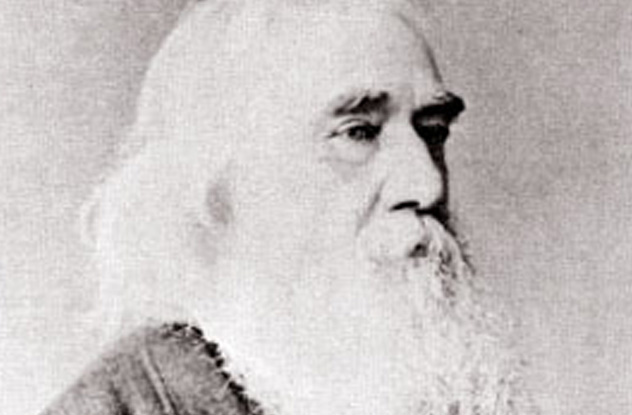
Ever wonder why the USPS is the only agency delivering mail in America? Sure, UPS and FedEx deliver packages, but why don’t other businesses regularly drop letters in your mailbox? Well, there was a time when the US Mail had some stiff competition, courtesy of a radical fellow named Lysander Spooner.
Back in the 1840s, people weren’t pleased with the Postal Service. It was charging some pretty outrageous rates, and that didn’t sit well with Mr. Spooner. Trained in the law, our hero thought the government was abusing its postal privileges. While the Constitution gives the government the right to “establish post offices and post roads,” Spooner didn’t think it gave them a monopoly on the mail.
Determined to prove his point (and make some money), Spooner opened his own agency, the American Letter Mail Company. Right off the bat, he made things difficult for the government, offering stamps for 6.25 cents apiece as opposed to the government’s 12-cent stamp. He set up offices in major cities like New York, Boston, and Philadelphia, and in some areas, he even provided free local delivery. Soon Spooner was doing better business than the government.
The government didn’t take kindly to Spooner’s venture and did their best to shut him down. They threatened to stop sending government mail on trains if railroads carried anything from Spooner’s company. They levied fines against the man, and the two agencies duked it out in court. Most importantly, they tried undercutting Spooner’s stamps, but when their prices went lower, so did Spooner’s.
Unfortunately for Spooner, the government won in 1851 when Congress established the absurdly cheap three-cent stamp. Unable to compete, the American Letter Mail Company closed its doors. While the underdog didn’t win this particular battle, at least he gave the bullies a run for their money.
8Robert Kearns vs. Ford And Chrysler
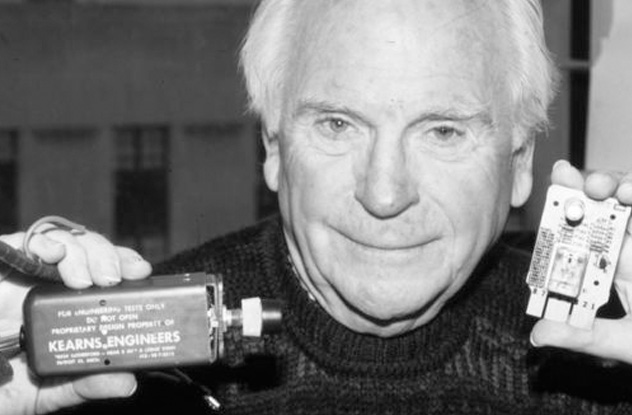
While teaching at Wayne State University in the ‘60s, Robert Kearns spent his spare time inventing items like a comb that squirts hair tonic. However, his best invention was the intermittent windshield wiper. Before Kearns came along, wipers only had two settings: steady rain and heavy rain. Kearns invented wipers with multiple speeds. They were simple, brilliant, and patented for his exclusive use.
Kearns didn’t just want to sell his invention. He wanted to become the sole manufacturer. But things didn’t work that way. At first, Ford seemed intrigued, but after examining his designs, they decided to pass on them. Then they released their own intermittent wiper in 1969. Mercedes followed soon after, and so did Chrysler.
Kearns didn’t take this well and suffered a mental breakdown. Once he started thinking clearly again, he declared war on the auto industry. In 1978, he took Ford to court and then Chrysler in 1982. Often working as his own attorney, Kearns used his kids as paralegals. His house was soon packed with legal documents. Eventually, it was too much for his family, and his wife divorced him.
After years of battling some of the biggest companies on Earth, Kearns finally won. In 1990, Ford handed over $10.2 million, and Chrysler paid $21 million. But Kearns wasn’t satisfied. He wasn’t interested in money. He wanted the courts to stop the auto industry from using his invention so he could start his own wiper-making business.
Sadly, Kearns didn’t get his way. Not only were his new lawsuits against GM and foreign companies dismissed—most of his millions went to legal expenses.
In 2005, the inventor-litigant died of cancer at 77. While he defeated two giants and got his own movie starring Greg Kinnear, this modern-day David never viewed his accomplishments as a victory. He really wanted his own factory where he could produce his intermittent wipers, and that dream just didn’t come true.
7The Winkler County Nurses vs. Kermit Officials
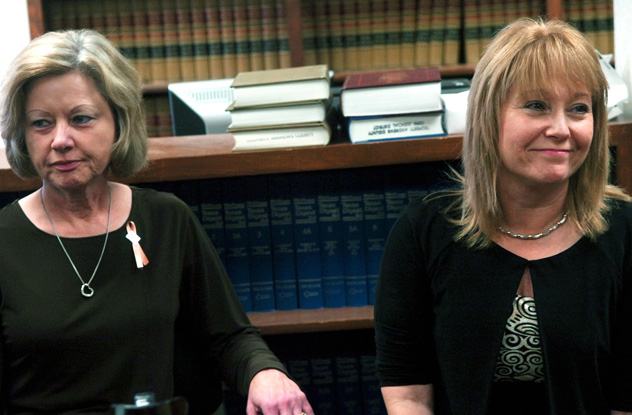
Naomi Warren, Vickilyn Galle, and Anne Mitchell were nurses at Winkler County Memorial Hospital in Kermit, Texas, and they were worried about the new doctor. Rolando Arafiles never checked medical charts, and he randomly changed patients’ medications. He diagnosed patients with a homemade checklist inspired by alternative medicine paperbacks and passed out free samples of herbal medicines, hoping patients would buy his goods. Even worse, he was a family practice doctor improvising surgeries in the emergency room.
Concerned, the nurses went to Stan Wiley, the hospital administrator, but he brushed aside their complaints and ordered them to stop sending the doctor’s records for peer review. Frustrated, Naomi Warren quit, but the three women couldn’t turn a blind eye. They wrote letters to the Texas Medical Board (TMB), calling for an investigation. Warren used her real name. The others stayed anonymous.
The TMB agreed to check things out and notified Arafiles that he was under investigation. Furious, the doctor went to his golf buddy, Sheriff Robert Roberts. Arafiles told Roberts that he was being harassed, so the sheriff started an illegal investigation to catch the whistleblowers.
Violating medical confidentiality, he interviewed hospital patients to see if they’d squealed. Next, he illegally acquired the nurses’ complaints from the TMB, using them to track down Galle and Mitchell. While the letters were anonymous, the nurses included details like their age and sex, so Roberts pieced things together. The sheriff then asked Winkler County attorney, Scott Tidwell, for a warrant to search the nurses’ computers.
Tidwell was the personal attorney to Roberts, to Arafiles, and to the hospital.
Warrant in hand, Roberts found the complaints on the nurses’ computers. He reported the women to Stan Wiley, and the two were fired. Days later, Galle and Mitchell (but inexplicably not Warren) were charged with misuse of official information and were facing 10 years behind bars. But as the trial neared, Tidwell dropped charges against Galle and focused solely on Mitchell, possibly because she was an outspoken New York native, an affront to the domineering Texas boys.
But the jury smelled a conspiracy and found Anne Mitchell not guilty. And, believe it or not, justice was actually done. The conspirators were fined and served jail time, Roberts was removed as sheriff, and Arafiles was stripped of his medical license. The women today travel the country, speaking at nursing associations and standing up for patients’ rights.
6Jabbar Collins vs. The State Of New York
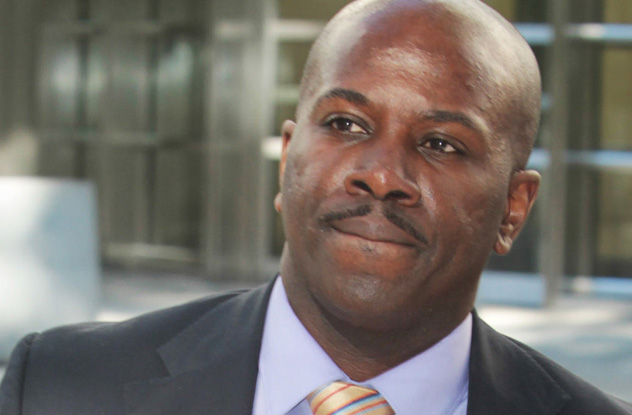
When Rabbi Abraham Pollack was murdered in 1994, authorities blamed an innocent young man named Jabbar Collins. Though he claimed he’d been getting a haircut, three witnesses put Collins at the scene, and a judge put him behind bars for 34 years to life.
But Collins wasn’t going down without a fight. He spent most of his time studying in the prison library, going through legal textbooks and learning how to access public records. After two months of research, he started filing requests for trial records, and when those were rejected, he filed appeals and launched a lawsuit. His persistence paid off, and Collins spent eight years pouring over transcripts, trying to find a way to clear his name.
In 2003, Collins went undercover and called Arian Diaz, one of the three witnesses. Posing as a district attorney investigator, Collins tricked Diaz into confessing that he’d only testified after authorities threatened to revoke his probation. That was especially damning since the prosecutor had kept it a secret from Collins’s attorney.
Two years later, Collins contacted a second witness, Edwin Oliva, who admitted that he’d been arrested for robbery in the building where Pollack had been shot. Officials had threatened to charge him as an accessory to murder unless he signed a statement blaming Collins for the crime. In exchange, they gave him a light sentence for his burgling ways, and yet the prosecutor claimed witnesses had received nothing for their testimonies.
Armed with new info, Collins hired civil rights attorney Joel Rudin, but the jailhouse lawyer kept himself busy as well. Collins listened to 911 calls from that fateful day and realized that none of them matched the voice of Angel Santos, the third witness who’d supposedly called the cops. Collins even hired a voice expert to compare Santos’s voice to the recordings, and there wasn’t a single match.
Despite new evidence, a state judge shot down Collins’s appeal, but the feds were more reasonable. After a one-day hearing in 2010, a federal judge dismissed the charges. Jabbar Collins was finally free after 15 years. Today, he works for Joel Rudin as a paralegal, and he made New York pay for his time behind bars. Collins took the city for $10 million and the state for $3 million.
5Paul Morantz vs. The Synanon Cult
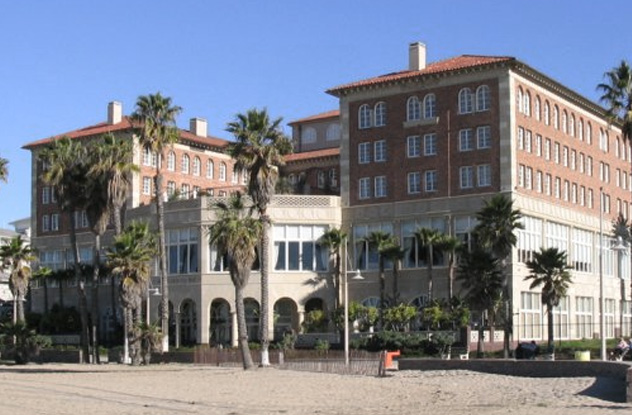
Back in the ‘60s and ‘70s, Synanon was a drug rehab facility with some unusual practices. Members shaved their hands and participated in therapy sessions where junkies sat in a circle and screamed at one another for up to 48 hours. They didn’t believe in pharmaceuticals, so if you wanted to get clean, you went cold turkey in a locked room.
But it’s hard to argue with results. Synanon claimed a nearly 100-percent recovery rate, and their good work attracted praise from celebrities and politicians. They worked with companies like IBM, earned millions from their for-profit businesses, and even got their own Hollywood movie.
Only that 100-percent recovery rate was pure fiction. Synanon was actually a cult led by a psycho named Charles Dederich. He split kids from their parents, forced followers to get vasectomies and abortions, and ordered married followers to divorce. Dederich was especially talented at gaining new converts and holding them hostage until they ran out of money.
Enter Paul Morantz, a lawyer specializing in rescuing people held against their will. In 1977, a distraught husband begged Morantz to save his wife from Synanon. She was mentally ill, and the cult was keeping her captive until as her bank account ran dry, believing that everyone would get better in their environment.
Morantz agreed to help and quickly learned that Synanon was dangerous. Nobody cared that the group wasn’t a licensed rehab center or that Dederich was insanely violent. The man had a private army, owned $300,000 worth of weapons, and ordered followers to beat up his enemies. Local cops didn’t interfere because a few were Synanon converts. Morantz was outmatched.
Nevertheless, he tricked Synanon with his legal expertise. When the mentally ill woman had a psychotic break, Synanon agreed to hand her back—if they signed a waiver of liability. Morantz agreed but pulled a fast one on them. He wrote a document releasing Synanon of liability but then added in the words “for releasing her.” The contract therefore stated that they were not liable for letting her out of the cult; the couple sued Synanon for a tidy sum, and Dederich declared war on Morantz.
In 1978, Dederich’s men put a 150-centimeter (4.5 ft) rattlesnake in Morantz’s mailbox, minus the rattle. When Paul checked the mail, the serpent struck, sending Morantz to the hospital for six days. But this attorney wasn’t intimidated. When he recovered, Morantz took Dederich to task. During a civil trial, he tricked the cult leader into admitting his guilt. By the time Morantz was done, Dederich received five years’ probation and had to step down as head of Synanon.
Eventually, reporters and politicians wised up to Synanon’s true nature. The cult was labeled a terrorist group and lost its tax-exempt status. The nasty little commune collapsed in 1991, and even though they survived the rattlesnake incident, Morantz was the man who started the chain of events that brought Dederich’s downfall.
4Don Giuseppe “Pino” Puglisi vs. The Mafia
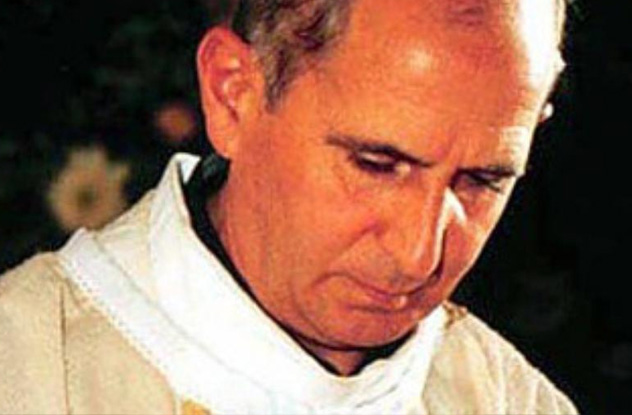
Early in 2014, Pope Francis made headlines after excommunicating all mafiosos. But when Giuseppe “Pino” Puglisi was ordained in 1960, Church officials weren’t quite so firm. While many priests personally opposed organized crime, they didn’t fight back. Even worse, influential figures like the Archbishop of Palermo claimed that the Mafia was just a myth.
Don Puglisi changed all that. After serving for years in the village of Godrano, he was assigned to Brancaccio, an old neighborhood in Palermo, Sicily. The area was controlled by the brutal Mafia bosses Filippo and Giuseppe Graviano, but Puglisi wasn’t intimidated. When he showed up in Brancaccio, he became a crusader, taking on the mob in subtle but crucial ways.
To defeat the Mafia, Puglisi wanted to change the way people thought about the mob. He turned his attention to Brancaccio’s children. Since education plays a huge part in keeping kids out of trouble, the priest urged neighborhood children to attend school. He also built a soccer field to keep them occupied after class.
During sermons, Puglisi trashed the Mafia, called out politicians working with crooks, and encouraged his flock to stand up to the mob. Perhaps he was most famous for inspiring people with the question “And what if somebody did something?” This didn’t sit well with the Mafia. They called him at night, threatening him with violence, but Don Puglisi never backed down.
Things finally came to a head in 1993. Sick of this priest, the Gravianos sent a group of hit men to Puglisi’s home. He was murdered on February 15.
Puglisi didn’t die in vain. The Gravianos and four assassins were sentenced to life in prison, and his murder inspired Catholic officials to condemn the mob. Eventually, the Church honored Puglisi by declaring him a martyr, and he was beatified in 2012.
3Anthony Omari vs. Machete-Wielding Gangsters

If you’ve seen Oldboy, you know hammers make excellent weapons. But if you want real-life proof, just ask Anthony Omari. Armed with only a claw hammer, this man single-handedly took on a gang of thieves . . . twice.
Located in Ngong, Kenya, the Faraja Children’s Home is run by Omari’s mother, Martha “Momma” Bosire. In January 2012, the orphanage was home to over 30 children. It was also in serious trouble. Despite their best efforts, Bosire and Omari struggled with insufficient funds, lack of food, and machete-wielding thugs who kept raiding the compound. During one invasion, Omari forced the crooks to retreat by hurling a hammer at their heads. That was just round one.
A few nights later, the thugs returned, and this time, they were back for blood. Omari awoke to find himself surrounded, and he reached under his bed and whipped out his faithful hammer. Swinging like a madman, Omari fought his way out of the room, ducking as the thieves slashed and threw their machetes at him. By the time he’d escaped, the orphans were awake and screaming in terror.
Omari tried to shepherd the kids back into safety, and one of the thieves chopped his face. The gash ran from his forehead down to his lip, but Omari wasn’t down for the count. Covered in blood, he smashed the attacker with his hammer and shut the children in their room before passing out. When he awoke, his face was mangled, but the thieves were gone, and the children were safe.
The story doesn’t end here. Penn State student Ben Hardwick heard about Omari’s bravery and posted the story on Reddit. Hardwick asked for donations to help Omari build proper fortifications, and he ended up with over $80,000. Thanks to those donations, Hardwick supplied the children’s home with new padlocks, professional guards, and a 2.5-meter (8 ft) fence. Suddenly, Omari wasn’t such an underdog anymore.
2North Jackson High School vs. Fort Payne
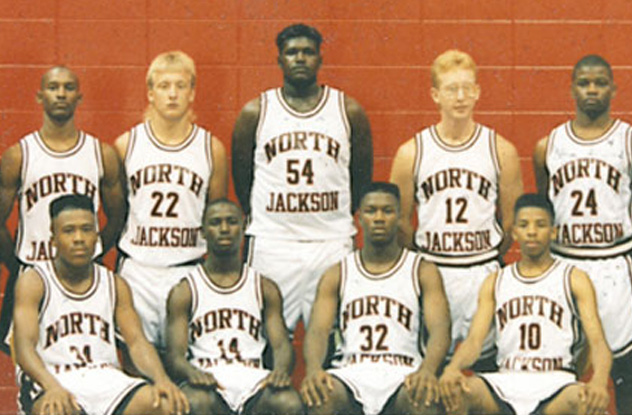
It was February 1992, the North Jackson Chiefs were playing the Fort Payne Wildcats, and everyone knew the Chiefs were going to lose. Fort Payne was the bigger school with many more players on their roster. As for the Chiefs, they were from the little town of Stevenson, Alabama. Making things worse, their best scorer quit a few days before the game.
Yet the basketball game turned into an all-out war, with the score jumping back and forth until the game went into overtime. And this is where things get weird. In the NBA, referees call about 50 fouls a game, but in the Stevenson gym, there were over 80 personal fouls, and the Chiefs were losing players left and right.
Finally, there were only two Chiefs left, Robert Collier and Chad Cobb. Robert was 210 centimeters (6’1”) and 110 kilograms (245 lb), but Chad was a short guy, about 170 centimeters (5’8″). The two had grown up playing ball against adults on a dusty lot, but now the game was tied, they had 17 seconds, and there were five Wildcats waiting to eat them up.
Robert needed to pass the ball to Chad, but Cobb was totally surrounded. He feinted hard, breaking out of the mob and catching Robert’s throw. Zipping back and forth, Chad rushed down the court, made a layup . . . and missed. But Robert was already there. He snagged the rebound and pump-faked, tricking the others into jumping. As the Wildcats fell back to Earth, Robert sank the ball into the net, winning the game 69 to 67.
The boys became superstars, but only for a while. The miracle game didn’t launch their basketball careers or change their lives. Instead, Robert became a coke addict and ended up in prison. Chad wound up in a motorcycle wreck and was later shot by one of his fellow Chiefs.
But while he didn’t become a superstar, Chad is now a dad with two great kids. “If I was to die tomorrow,” he told Radiolab, “I’m happy with my ending.” And even though their dreams never came true, Robert and Chad still have that game when they took on five Wildcats and won.
1The McDonough Family vs. Adam Leroy Lane

It was July 30, 2007, and the McDonough family was fast asleep. The air conditioner wasn’t working properly, so 15-year-old Shea was camping out in the cooler guest room, right next door to her parents. Mom and Dad were Jeannie and Kevin, your average American couple. The family lived in Chelmsford, Massachusetts, near Interstate 495.
Shea woke up to a knife at her throat. The man holding it was trucker Adam Leroy Lane. Within two months, he had broken into houses in New Jersey and Pennsylvania, murdering two women and injuring another. Now, he was ready for victim number three.
Only Lane had picked the wrong house.
Despite a hand over her mouth, Shea let out a muffled scream. Since the AC wasn’t working, Kevin and Jeannie heard the noise and went to check on their daughter. When they opened the door, the parents saw a black-clad man in a ninja mask. They went into superhero mode.
Kevin was 175 centimeters (5’9”) and 72 kilograms (160 lb), and Jeannie was 155 centimeters (5’1”) and 60 kilograms (135 lb). Both were sleepy, empty-handed, and in their underwear. As for Lane, he was 180 centimeters (5’11″), weighed 110 kilograms (245 lb), and was carrying two knives, a throwing star, and a garrote. But that didn’t stop Kevin from taking Lane to the ground.
Next, the desperate father threw himself on top of the killer, but like a horror movie monster, Lane staggered back up, with Kevin holding on for dear life. Jeannie moved in, grabbing for the blade and slashing her hands in the process.
While Jeannie wrestled for the weapon, Kevin put Lane in a chokehold, and Shea dialed 911. The battle lasted for four minutes until the cops arrived. As the officers hauled Lane away, Kevin kept his action hero cool and muttered, “Get that scum outta here.” Lane would later earn life sentences, and while the McDonoughs were traumatized, they’d escaped with their lives.
Of course, maybe they weren’t such underdogs after all. According to Kevin, “We had angels watching over us that night.”
If you want, you can friend/follow Nolan on Facebook, or you can send him an email.








